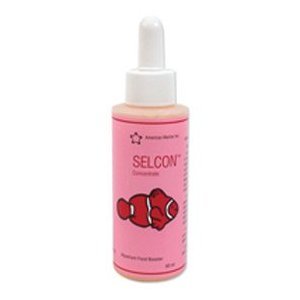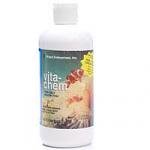I'm really sad about the ich and that so much credence is given to a" wait and see method. Really ,'wait and see" now has the status of a method" ? It thought mtyhs about reef safe treatments, garlic, uvs ,cleaner shrimp ,feeding to boost immune sytems , and ich is mysteriously everywhere had gone a little further down the road follwed by the thousands upon thousands of fish that die needlessly from this protozoan(crytocaryon irritans) in the confines of aquariums.
Garlic is a nice appetite enhancer for some fish, nothing more .
Cleaner shrimp don't eat the parasite ;they pick at the wounds.
It's a parasite and it will attack a healthy or a sick fish with equal ferocity: it's not an immune system issue per se. Fish should always be fed well and kept in high quality water..
UV's won't kill this parasite ;it's too big and even if the uv is enormous it won't kill cysts or parasites that don't pass through it.
Reef safe potions that effectively remove this parasite don't exist.
Fish get better in a few days after using this or that. That's a placebo effect. Fish that survive the first infestation often heal and look healthy but then in a week or so the infestation appears again with a vengance and they often die. Each parasite that leaves a fish and encysts can produce 100 to 200 new ones.
Don't move the fish ; you'll stress it. I suppose so , if you drop it on the floor or dump it in a tiny tank crowded tank with no resting places and allow the ammonia to rise or chase it for hours. But if you can capture it gently and put it in a tank with lower salinity ,say a drop of .005, and treat it by tank transfer or copper for those not sensitive to it , it will suffer a lot less stress than it will when it is eaten alive by parasites and it's gills inflame to a point where it can't get adequate oxygen to sustain life ; no matter how much you feed it.
That is just how it is.
Ich in a closed system like an aquarium is a killer ,it needs to be treated effectively. Pretending it's not is tragic.
There are three proven methods and they are all labor intensive. All involve leaving the display tank fishless for 72 days and treating exposed fish outside the display in a quarantine tank or tanks. The quarantine tank must be set up to insure against ammonia toxicity and if the fish is going to be there for prolonged treatment , like hypo , the tank needs to large enough for the fish . The methods are are :
Tank transfer
Copper
hypo slainity( sometimes ineffective against resistant strains)
This parasite has been well studied as have treatments. There is no data to support any of the myths.
Quarantine and prophylactic treatment for new specimens( via tank transfer ,my favorite, or copper for most specimens ) stops it from getting in the tank in the first place. Once it's there ,it'll be there indefinitely( or at least a year or more) as long as there is a fish to host it. Fish that survive exposure (most don't) develop partial immunity but it's only partial and the fish still hosts it in the softer tissue of the mouth ,gills and nostrils.This may keep the ich population down but not out. Each time a parasite leaves a fish ,it goes to a surface,(rock sand ,etc) and encysts. It multiplies 100 to 200 fold and comes out for a second attack and then multiplies again and so on . New fish added to such a tank will be attacked even if the remaining fish in it appear healthy. This and often sparks an outbreak that sometimes overwhelms even partially immune fish.
I hope your fish make it whatever courseyou take. If you decide to set up a treatment tank . I'd be happy to answer any questions you have and help you pick an effective treatment method.


